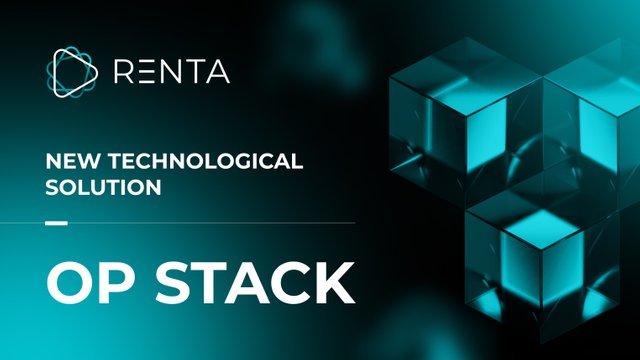OP Stack (Optimistic Rollups) vs. Polygon CDK’s Advanced Technology
OP Stack vs. Polygon CDK: Why Renta Chose OP Stack
Blockchain technology is evolving rapidly, presenting projects with the challenge of selecting optimal solutions for scalability and efficiency. After extensive analysis, our team at Renta Network decided to transition from Polygon CDK’s Advanced Technology in Validium Mode to OP Stack (Optimistic Rollups). Here’s an in-depth look at why we chose OP Stack.
Understanding OP Stack:
Technical Specifications:
- Architecture: OP Stack uses Optimistic Rollups, where transactions are processed off-chain and only aggregated data is sent to the Ethereum Mainnet, reducing the load on the main network.
- Throughput: Capable of 2000-3000 transactions per second (TPS), significantly higher than Ethereum’s 30 TPS.
- Transaction Costs: Optimistic Rollups lower transaction costs by reducing operations on the mainnet, thanks to data optimization and compression.
- EVM Compatibility: Full compatibility with Ethereum Virtual Machine (EVM) allows seamless migration of existing smart contracts without code changes.
Advantages:
- Scalability: High throughput makes OP Stack ideal for projects requiring significant performance.
- Cost Efficiency: Lower transaction costs make the platform more accessible for users.
- Compatibility: Easy integration with Ethereum projects simplifies migration and implementation.
Understanding Polygon CDK:
Technical Specifications:
- Architecture: Polygon CDK provides a toolkit supporting various scaling mechanisms like Plasma, zk-Rollups, and Validium.
- Throughput: Throughput depends on the chosen mechanism, with zk-Rollups reaching up to 2000 TPS.
- Transaction Costs: Layer 2 solutions in Polygon CDK also lower transaction fees.
- Modularity: Allows developers to tailor blockchain solutions to specific needs using different scaling mechanisms.
Advantages:
- Flexibility: Modular architecture provides customization for specific tasks.
- Cost Efficiency: Low transaction fees similar to OP Stack.
- Scalability: Various scaling methods offer adaptability to different use cases.
Why Renta Chose OP Stack:
1. Ease of Integration:
OP Stack’s EVM compatibility made it easy for us to migrate our existing smart contracts and applications, reducing costs and accelerating the transition.
2. Increased Throughput:
Handling up to 3000 TPS, OP Stack meets the high transaction volumes and user activity of our project.
3. Reduced Transaction Costs:
Lower fees make the platform cost-effective, encouraging user activity and reducing barriers to entry.
4. Enhanced Security:
Optimistic Rollups provide mechanisms for transaction dispute resolution, ensuring transparency and trust.
Conclusion:
Both OP Stack and Polygon CDK offer robust solutions for scaling blockchain applications. However, OP Stack’s ease of integration, increased throughput, reduced transaction costs, and enhanced security align better with Renta Network’s goals. As we continue to evolve, these advantages will help us provide a more accessible, efficient, and secure service for our users.
Join Us:
We invite you to connect to our test network to experience the benefits of OP Stack and help us improve. Join our discussions on Telegram and Discord, share your experiences, and ask questions!
Thank you for being with us on this innovative journey!
Sincerely,
The Renta Team
